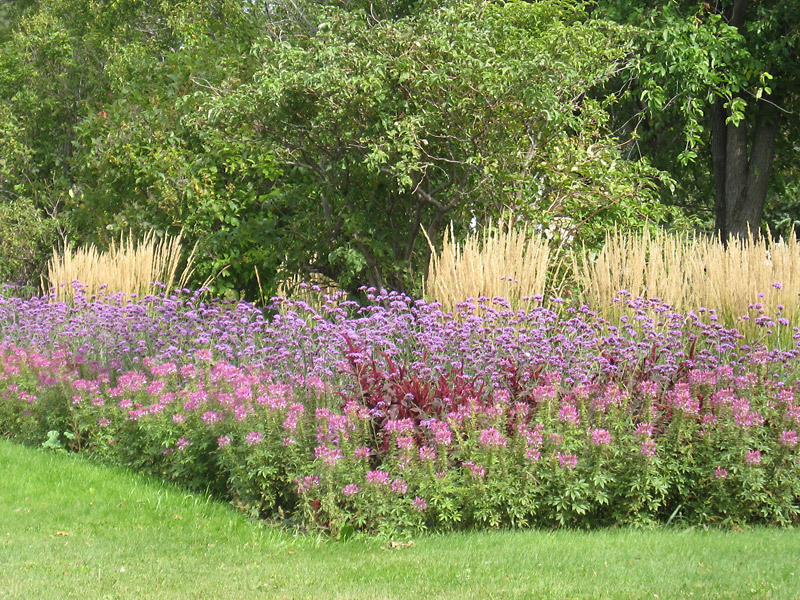Gone Gardenin’: Edging plants ramp up beauty factor in your landscape
Advertisement
Read this article for free:
or
Already have an account? Log in here »
We need your support!
Local journalism needs your support!
As we navigate through unprecedented times, our journalists are working harder than ever to bring you the latest local updates to keep you safe and informed.
Now, more than ever, we need your support.
Starting at $15.99 plus taxes every four weeks you can access your Brandon Sun online and full access to all content as it appears on our website.
Subscribe Nowor call circulation directly at (204) 727-0527.
Your pledge helps to ensure we provide the news that matters most to your community!
To continue reading, please subscribe:
Add Brandon Sun access to your Free Press subscription for only an additional
$1 for the first 4 weeks*
*Your next subscription payment will increase by $1.00 and you will be charged $20.00 plus GST for four weeks. After four weeks, your payment will increase to $24.00 plus GST every four weeks.
Read unlimited articles for free today:
or
Already have an account? Log in here »
Hey there, time traveller!
This article was published 15/09/2016 (3362 days ago), so information in it may no longer be current.
I have always been a fan of edging beds and borders with suitable plants.
Years ago in my Birtle garden, I used mostly lobelia and dusty miller to edge small flower beds and I didn’t bother edging my vegetable patch as it was in the backyard and more or less separate from the rest of the landscape.
When we established our Carberry garden in the early 1990s, our whole backyard was composed of the vegetable garden with flowers incorporated into it and perennial beds along the property lines on both sides. A grass pathway containing limestone flagstones wound through the garden toward the back fence and I used edging plants along both sides of it.

Currently, in our Minnedosa garden, our vegetable garden is in the side yard and I always use edging plants to separate it from the lawn area beside it. I use this edging to produce flowers for cutting, among them marigolds, tall ageratum, Victoria salvia and zinnias.
As you can see, I have used edging plants mainly to separate one garden room — the vegetable garden — from the rest of the landscape, or to give a unifying effect to smaller flower beds. Edging plants are great for accomplishing both of these tasks.
A vegetable garden is a functional part of the landscape and as such, at times it is not the most attractive feature in the landscape. Plants mature, are harvested, and the tops die off, leaving unsightly or bare spots in the garden.
An edging of colourful flowers keeps the eye from wandering into the vegetable garden and maintains focus on the blooming plants along the edge. In this instance, slightly taller plants will be more effective than low growing ones.
Although lobelia and dwarf marigolds might be suitable to edge a small flower border, they might not be substantial enough to deter the eye from wondering into less attractive areas beyond the rows of flowers. Although I use mid-sized plants, quite tall plants like cosmos, tall African marigolds, cleome, and lavatera would create a wall or fence effect, visually separating the two areas of the landscape even more.

What does one accomplish by using edging plants besides providing separation between different areas or zones of the garden? Edging plants add a crisp and finished look to the landscape — not as formal or defined as a hardscaped edging, but a softer, more natural look.
Edging plants also accentuate the line of whatever it is that they are bordering — a row of edging plants along the curving line of a long flower border will emphasize the curving line. Edging plants help define the boundary of the area being edged, such as a driveway or patio.
Edging a hardscaped feature of the landscape, such as a patio or driveway, with colourful plants will soften the edges of the hardscape as well as add colour and texture. In this case, the plants must be chosen carefully.
Edging plants alongside a hardscaped surface must be well behaved; they must have a tidy growth habit and not produce litter. Even if they do not bloom for the entire summer, they should have a long bloom period and/or have attractive foliage — foliage that remains in good shape until season’s end.
Plants used to edge flower borders can be annual or perennial, depending on the plants used in the bed or border. Perennial plants would be a more suitable choice for an all-perennial border while annual edging plants might be used in an annual or mixed border.

A row of all one kind of plant will certainly add a great deal of unity to the landscape, but an edging plan can include several different plants. In such cases, one method is to create a series of vignettes, each of which picks up on a colour from the previous one so that there is some continuity and unity to the design.
It is not always best to create a definite design, say four marigolds, two Victoria salvia, and a couple of red salvia, and then repeat that combination ad infinitum the entire length of the border. A better plan might be to use these plants in a different configuration in each vignette.
Perennial plants are great for creating such vignettes along the edge of a large perennial border. Some of the flowers and foliage of the edging plants should be echoed by those within the border to add increased unity in the design.
It is surprising how the wise use of edging plants in the landscape increases the overall beauty of the garden. Consider how you might add edging in your yard to increase its beauty.
Albert Parsons lives, writes, and gardens in Minnedosa.

» communitynews@brandonsun.com
